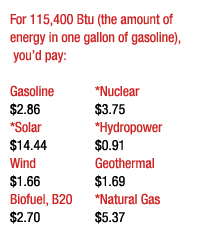Deprecated: preg_replace(): The /e modifier is deprecated, use preg_replace_callback instead in /usr/home/web/users/a0028728/html/blog/wp-includes/functions-formatting.php on line 83
I do not know about you, but I find statistics fascinating. The other day I was looking at a population data table on Geo Hive that contrasted the ratio between males and females, country by country. What I saw was quite a surprise. In some Muslim countries, the ratio is two men for every one woman. Now this might seem like an ideal environment for women, thinking they would have their pick of men, but the causes of this disparity should send any woman screaming for her life as far away from Islam as is possible.
Generally, in nature the ratio of males to females is one to one. This is even true for humans, deviating only marginally in either direction. Often after wars, the percentage of males in the human population goes down slightly. In the animal kingdom, evolution has provided biological mechanisms to insure there is a balance of males to females.
So, I wondered: How is it that in the United Arab Emirates and Qatar the ratio of men to women is greater than 2/1, in Kuwait 1.5/1, Bahrain 1.34/1, Oman 1.26/1, and Saudi Arabia 1.22/1?
Initially, when I first wrote this, I only came up with two possibilities. However, upon further study, I found that at birth the ratio of males to females in Muslim countries is close to one to one. For example, here is the population by gender statistics from the United Arab Emirates per age group.
at birth: 1.05 male(s)/female
under 15 years: 1.047 male(s)/female
15-64 years: 2.743 male(s)/female
65 years and over: 1.849 male(s)/female
total population: 2.19 male(s)/female (2007 est.)
Clearly something tragic is happening to females after age 15. Therefore, instead of two possibilities I realized there was a third - honor killings.
“Honour” killings of women can be defined as acts of murder in which “a woman is killed for her actual or perceived immoral behavior.” (Yasmeen Hassan, “The Fate of Pakistani Women,” International Herald Tribune, May 25, 1999.) Such “immoral behavior” may take the form of marital infidelity, refusing to submit to an arranged marriage, demanding a divorce, flirting with or receiving phone calls from men, failing to serve a meal on time, or — grotesquely — “allowing herself” to be raped. In the Turkish province of Sanliurfa, one young woman’s “throat was slit in the town square because a love ballad was dedicated to her over the radio.” (Pelin Turgut, “‘Honour’ Killings Still Plague Turkish Province,” The Toronto Star, May 14, 1998.)
The next possible cause of such a disparity between males and females is a type of honor killing, called female infanticide. This is where “a society values male children to the point that producing a female is considered dishonorable, shameful, or an unacceptable investment to the individuals.”
The final and most likely the largest contributor for the disparity between males and females is that census counters do not include females when polling the population. We know that Muslims regard women as property, so like a slave, they are not considered a human and thus not counted.
I suspect the causes of an enormously greater number of males to females in Muslim countries are due to a mixture of both honor killings and undercounting. In either case, this bodes poorly for women who are unfortunate enough to be living in those lands. It demonstrates the impact of Islam’s violation of basic human rights - the right to life, liberty and the pursuit of happiness. It is obvious to me Islam has declared war on its female population.
Please click this link to open a table that shows the Population Data Sorted by Gender Ratio
I have posted a retraction on the conclusions I have drawn here at my post titled, Erratum:Islam’s War on Women .
